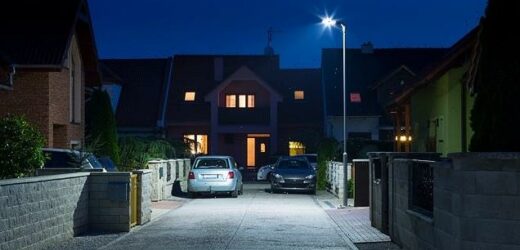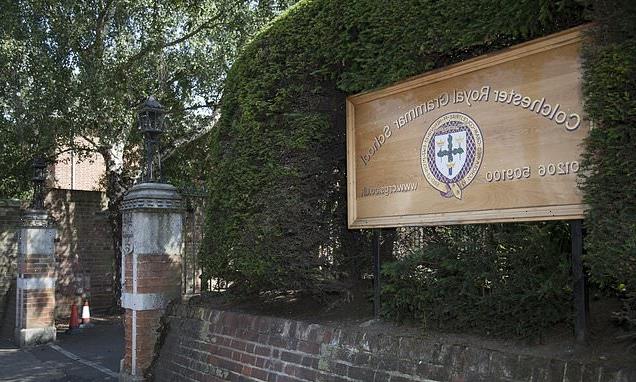Street lights INCREASE the risk of your car being broken into: Study finds vehicle crime is twice as high on roads where lights are left on after midnight
- Study found cars are twice as likely to be broken into on a well-lit road at night
- Switching off lights on one street led to increase in vehicle crime nearby
- Criminals may think that using a torch could raise suspicion among residents
You might think that parking your car under a bright street light would discourage a thief from trying to break into it, but in fact the opposite may be true.
A new study has found that vehicles are twice as likely to be broken into on a road that is well lit all night than on one where lights are switched off after midnight.
The study also found that switching off the lights on one street led to an increase in vehicle crime on nearby streets, where the lighting remained on all night.
This suggests some criminals are actively choosing to target cars on better-lit streets.
You might think that parking your car under a bright street light would discourage a thief from trying to break into it, but in fact the opposite may be true
STREETLIGHTS ‘KILL OFF INSECTS’
Eco-friendly light-emitting diode (LED) bulbs used in streetlamps produce more light pollution and are killing off insects, a study shows.
Researchers found LED streetlights kill off nocturnal moth caterpillar populations by 50 per cent, compared to areas without the lights.
Despite being seen as environmentally friendly, LED lights are even more harmful for insect populations than the traditional yellow sodium bulbs.
Read more: LED streetlights kill off insect populations by half, study finds
The study team, led by the London School of Hygiene & Tropical Medicine (LSHTM) and UCL, examined crime data from Thames Valley Police, together with data on changes to street lighting in the local authorities in Oxfordshire, Reading, West Berkshire from April 2004 to September 2013.
In contrast to previous studies, the changes to street lighting involved reducing rather than increasing lighting provision.
‘The reason we did this research is because many local authorities in the UK have introduced part-night lighting on quiet, urban residential roads and rural roads, which have very little use after midnight, to save energy costs and reduce carbon emissions,’ said Dr Phil Edwards from LSHTM, who led the study.
‘However, safety concerns about this policy have been raised.
‘Our previous research showed that switching off street lights at night does not increase crime. This new study suggests switching off street lights between midnight and 6am may actually reduce some types of crime.’
Over the ten-year study period there were 283,275 crimes, of which 79,000 (28 per cent) were vehicle crimes.
After controlling for the underlying long-term and seasonal trends in crime, the team found that theft from vehicles considerably reduced on roads with part-night lighting (PNL), where street lights are switched off between midnight and 5am.
Car break-ins decreased from an average of 12 per street per month before PNL to 6 per street per month after PNL was introduced.
For street segments with dimmed lighting there was also evidence of a reduction in night-time vehicle crime relative to day-time crime, although the effect was less robust than for PNL.
There was no evidence that white lighting was significantly associated with changes in any type of night-time crime examined by the researchers.
The decrease in car break-ins on roads with with PNL coincided with a similarly significant 1.5-times increase in vehicle crime on nearby streets where the lighting remained on all night.
Car break-ins decreased from an average of 12 per street per month before part-night lighting (PNL) to 6 per street per month after PNL was introduced
However, fewer crimes were ‘displaced’ to these nearby locations, meaning there was an overall net reduction in crime. Thefts of vehicles was also reduced but this was not statistically significant.
There was no evidence that lighting changes were associated with changes to the levels of violence, robbery or residential burglary.
‘The study findings suggest that energy saving street lighting adaptations have not increased crime in the streets studied,’ said Dr Lisa Tompson, who conducted the research at UCL but is now based at The University of Waikato, New Zealand.
‘This is very encouraging but it is important to note that it does not mean that this will be the case under all conditions, and so changes to lighting should be managed carefully.’
The study did not set out to find the reasons for the observed changes, but Dr Edwards suggested that offenders may consider that the costs of committing a crime outweigh the benefits.
For example, they may think that using a torch could raise suspicion among residents.
‘When lighting is switched off after midnight the streets are likely to be in near darkness, which means that any would-be offenders may find it challenging to see if there are any valuable goods left unsecured in vehicles, so offenders may choose to move elsewhere to fulfil their intentions,’ he said.
Researchers suggest that criminals may think that using a torch could raise suspicion among residents
The authors acknowledge limitations of the study, including that the findings reported are for only one of the 43 UK police force areas and so the findings may not be generalisable to the national level.
Also, for some crime reports the exact time of an offence was unknown, so some vehicle crimes may have occurred either before the lights were switched off, or after they were switched on again.
‘The way people use spaces is complex and multifaceted.
‘This report looks at part of the picture and its valuable findings are just one piece of a bigger jigsaw. However, this should not be seen as a “one-size-fits-all” solution.
‘The report also did not mention the impact that lack of lighting had on the elderly and more vulnerable in society – their fear of crime and their reluctance to leave their homes at night.’
The LANTERNS project was commissioned by the National Institute for Health Research (NIHR), and was published in the Journal of Quantitative Criminology.
LIGHT POLLUTION IS ARTIFICIAL LIGHT THAT IS EXCESSIVE, OBTRUSIVE AND WASTEFUL
Light pollution, also known as photopollution, is the presence of anthropogenic light in the night environment.
Artificial light that’s excessive, obtrusive and ultimately wasteful is called light pollution, and it directly influences how bright our night skies appear.
With more than nine million streetlamps and 27 million offices, factories, warehouses and homes in the UK, the quantity of light we cast into the sky is vast.
While some light escapes into space, the rest is scattered by molecules in the atmosphere making it difficult to see the stars against the night sky. What you see instead is ‘Skyglow’.
The increasing number of people living on earth and the corresponding increase in inappropriate and unshielded outdoor lighting has resulted in light pollution—a brightening night sky that has obliterated the stars for much of the world’s population.
Most people must travel far from home, away from the glow of artificial lighting, to experience the awe-inspiring expanse of the Milky Way as our ancestors once knew it.
Light pollution is excessive and inappropriate artificial light. While some light escapes into space, the rest is scattered by molecules in the atmosphere making it difficult to see the stars against the night sky. What you see instead is ‘Skyglow’
The negative effects of the loss of this inspirational natural resource might seem intangible.
But a growing body of evidence links the brightening night sky directly to measurable negative impacts on human health and immune function, on adverse behavioural changes in insect and animal populations, and on a decrease of both ambient quality and safety in our nighttime environment.
Astronomers were among the first to record the negative impacts of wasted lighting on scientific research, but for all of us, the adverse economic and environmental impacts of wasted energy are apparent in everything from the monthly electric bill to global warming.
Source: Read Full Article






